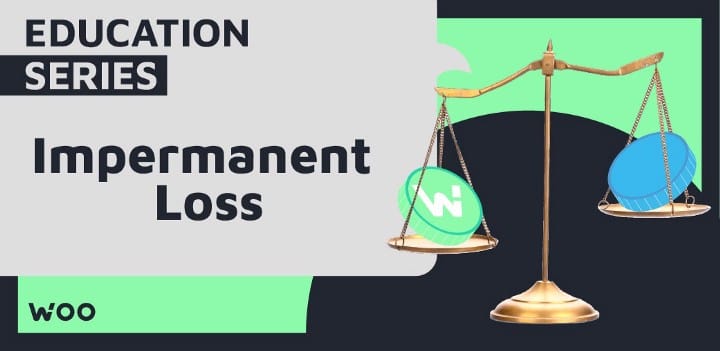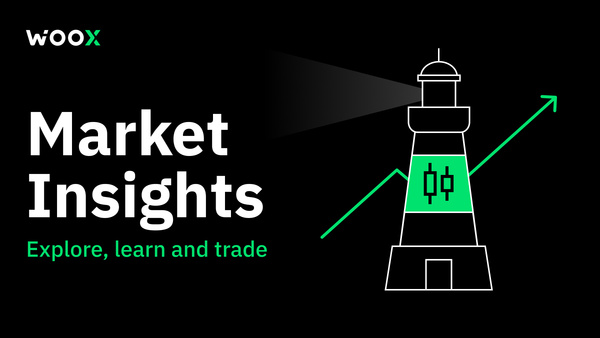Impermanent Loss: a fancy word for adverse selection
Impermanent loss is a real headache for AMM liquidity providers. We explain the concept from the perspective of a market-maker.
What is impermanent loss?
Automated Market-Making platforms (AMMs) have recently gained ground among cryptocurrency holders. DeFi protocols like Uniswap took decentralized exchanges (DEXs) to a higher level by allowing any participant to provide liquidity and earn yield due to trading fees. Staking or providing liquidity to a liquidity pool can be profitable, but liquidity providers are susceptible to an issue known as impermanent loss, where tokens staked in the pool may be reduced or temporarily “lost” due to volatility and the formula that governs the pool.
To become a liquidity provider (LP) on an AMM you usually have to take both sides of the pool by staking two tokens (for example WOO and ETH) on the platform. If one of the assets’ price changes on another exchange it will create an arbitrage opportunity (buying an asset at the lower price and selling it on a different platform for higher). Arbitrageurs ensure that the price the pool quotes reflects the current market price of the assets and the protocol seeks to maintain the same ratio of tokens in the pool. This can lead to a situation when a profit is taken from a liquidity provider in favor of traders. If the LP decides to withdraw the token from the liquidity pool, the impermanent loss becomes permanent.
If you want to go deeper into impermanent loss, there are several excellent articles, videos, and calculators such as these:
- $Baller Impermanent Loss Calculator
- Pintail video: Uniswap: A Good Deal for Liquidity Providers?
- Boxmining article: Impermanent Loss Explained
An important thing to note here is that any divergence from entry price means some sort of impermanent loss as this quote from Pintail shows.
“a 1.25x price change results in a 0.6% loss relative to HODL
a 1.50x price change results in a 2.0% loss relative to HODL
a 1.75x price change results in a 3.8% loss relative to HODL
a 2x price change results in a 5.7% loss relative to HODL
a 3x price change results in a 13.4% loss relative to HODL
a 4x price change results in a 20.0% loss relative to HODL
a 5x price change results in a 25.5% loss relative to HODL”
Adverse Selection
Market makers in traditional order book exchanges also suffer from a type of Impermanent Loss, which is simply known as adverse selection — a situation where traders have potentially better opportunities in the market by possessing different or more information. Market makers and LPs are largely unable to react to the latest information, making them volunteers to be the victim of this unfavorable market situation.
Market makers like Kronos Research ensure that they don’t suffer this kind of loss by utilizing sophisticated techniques, algorithms, and risk management strategies to profit off trades and eliminate these losses. When the Wootrade asset management program comes online, liquidity providers will also be able to provide capital and utilize these same techniques to benefit from market-making.
Enough with the talk, show us how this affects me!
To illustrate adverse selection, here’s a very simplified example of this if a user is quoting on the ETH/USDT pair with this balance:

A trader knows that ETH will soon be in high demand due to staking and buys 5 ETH, leaving the pool with this balance:

The price of ETH then goes up to $1000 which increases the USD value of the pool’s inventory:

Not bad right? But what about if he held and didn’t sell?

The difference between just holding and selling is $2500.
This sounds crazy, why would anyone use an AMM?
Now, why would a liquidity provider risk his or her assets in something that has a chance of providing impermanent loss if the prices of assets diverge from the entry point?
- Trading fees — trade fees accumulate over time and can make up and exceed impermanent loss — for an LP the longer he stakes, the more fees he gets which incentivizes long-term stakers.
- Staking rewards — help against impermanent loss by providing additional “income” or yield to the liquidity provider. Wootrade will be providing staking rewards for stakers in the Balancer pool in addition to any BAL the pool earns.
To support WOO token holders, WOO staking was launched on the Balancer pool, where stakers can earn rewards in WOO and BAL, as well as trading fees from being liquidity providers. These extra rewards will offset the potential effects of impermanent loss, and as trading volume grows, WOO holders should be able to smartly increase their assets.
Ready to give it a try? Check out the link below for more details. For those not ready to leap into the DeFi space, try out one of the other staking programs on centralized exchanges such as BitMax or Huobi.
Wootrade launches on Balancer with a bonus reward pool
Provide liquidity in WOO and ETH to earn BAL and WOO tokens with additional bonuses for early supporters
medium.com
Stay updated with Wootrade’s news:
Website: https://woo.network/
Twitter: https://twitter.com/wootraderS
Telegram: https://t.me/wootrade
Medium: https://medium.com/wootrade


